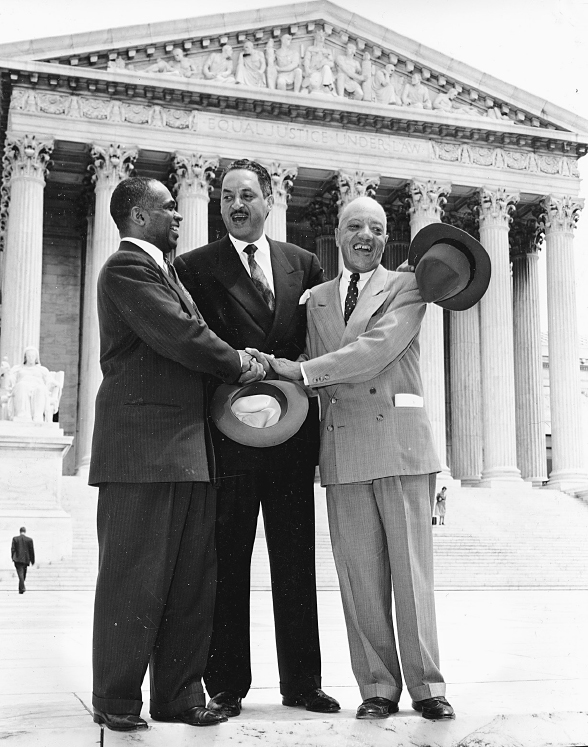Printed Page 879-801-780(cont.)
America’s History: Printed Page 879
America: A Concise History: Printed Page 801
America’s History: Value Edition: Printed Page 780
Forging a Protest Movement, 1955–1965
Declaring racial segregation integral to the South’s “habits, traditions, and way of life,” the Southern Manifesto signaled that many whites would not accept African American equality readily. As Americans had witnessed in Little Rock, the unwillingness of local officials to enforce Brown could render the decision invalid in practice. If legal victories would not be enough, citizens themselves, black and white, would have to take to the streets and demand justice. Following the Brown decision, they did just that, forging a protest movement unique in the history of the United States.

The Legal Strategy
On the steps of the Supreme Court, on the day in 1954 that Brown v. Board of Education of Topeka was decided, are the architects of the NAACP legal strategy in the Brown case and dozens of others. Together (from left to right), George E. C. Hayes, Thurgood Marshall, and James M. Nabrit pursued cases that undermined the constitutional foundation of racial segregation. Their efforts were not enough to destroy Jim Crow, however — that would take marches, protests, and sacrifices from ordinary citizens. AP Images.